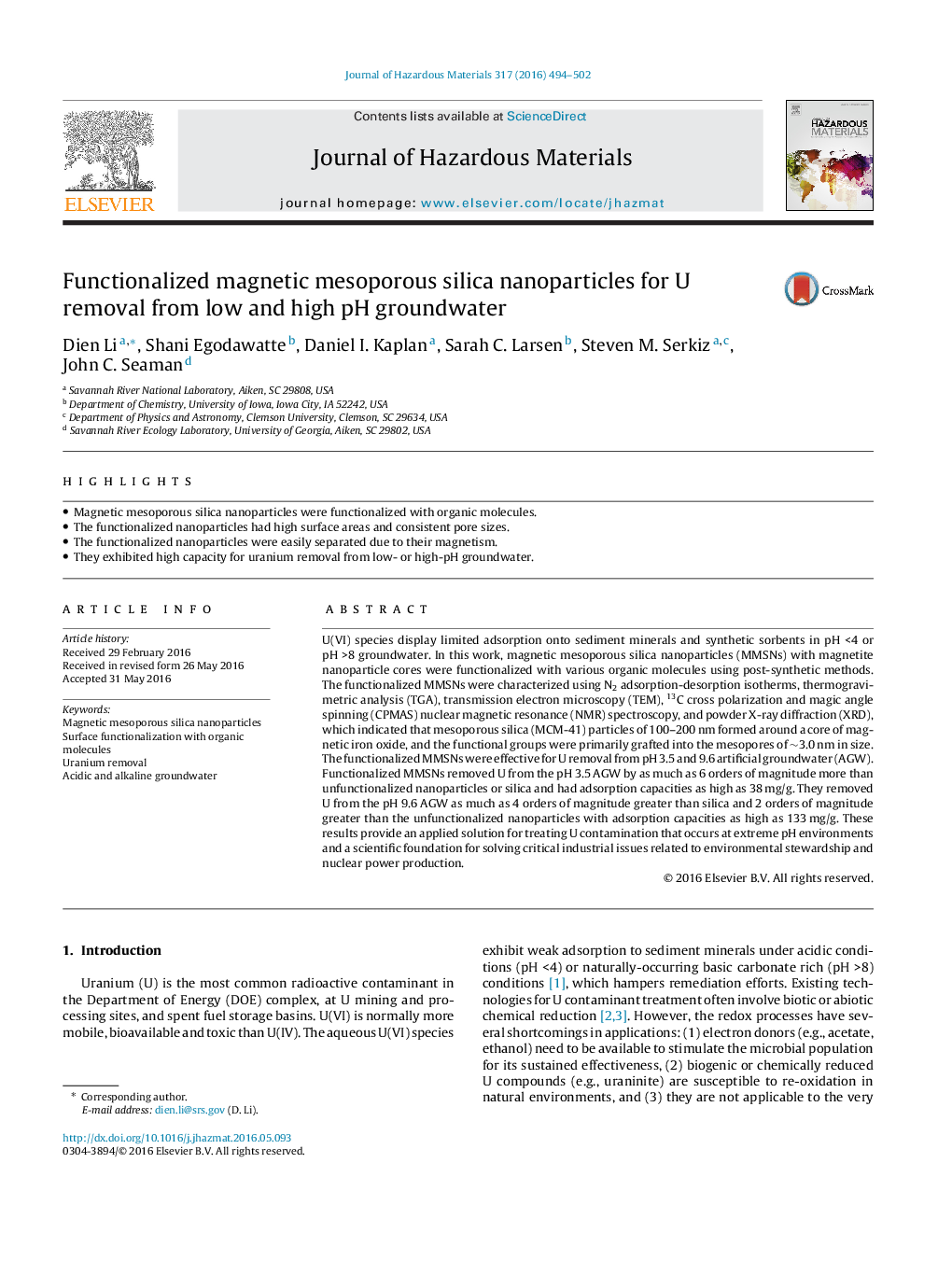| Article ID | Journal | Published Year | Pages | File Type |
|---|---|---|---|---|
| 6970325 | Journal of Hazardous Materials | 2016 | 9 Pages |
Abstract
U(VI) species display limited adsorption onto sediment minerals and synthetic sorbents in pH <4 or pH >8 groundwater. In this work, magnetic mesoporous silica nanoparticles (MMSNs) with magnetite nanoparticle cores were functionalized with various organic molecules using post-synthetic methods. The functionalized MMSNs were characterized using N2 adsorption-desorption isotherms, thermogravimetric analysis (TGA), transmission electron microscopy (TEM), 13C cross polarization and magic angle spinning (CPMAS) nuclear magnetic resonance (NMR) spectroscopy, and powder X-ray diffraction (XRD), which indicated that mesoporous silica (MCM-41) particles of 100-200Â nm formed around a core of magnetic iron oxide, and the functional groups were primarily grafted into the mesopores of â¼3.0Â nm in size. The functionalized MMSNs were effective for U removal from pH 3.5 and 9.6 artificial groundwater (AGW). Functionalized MMSNs removed U from the pH 3.5 AGW by as much as 6 orders of magnitude more than unfunctionalized nanoparticles or silica and had adsorption capacities as high as 38Â mg/g. They removed U from the pH 9.6 AGW as much as 4 orders of magnitude greater than silica and 2 orders of magnitude greater than the unfunctionalized nanoparticles with adsorption capacities as high as 133Â mg/g. These results provide an applied solution for treating U contamination that occurs at extreme pH environments and a scientific foundation for solving critical industrial issues related to environmental stewardship and nuclear power production.
Related Topics
Physical Sciences and Engineering
Chemical Engineering
Chemical Health and Safety
Authors
Dien Li, Shani Egodawatte, Daniel I. Kaplan, Sarah C. Larsen, Steven M. Serkiz, John C. Seaman,
